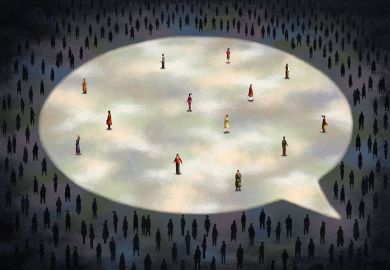The painter Samuel Palmer once accompanied William Blake on a visit to the Royal Academy, of which Blake had been denied membership because he was an engraver and hence a mere artisan rather than an artist. While Blake remained in almost complete obscurity, here were the great and good of the early 19th-century art establishment enjoying the full benefits of public recognition. Palmer remarked: "How little you know who is among you."
Although far more people have heard of him these days, do we know Blake any better? If Saree Makdisi is right, many of his ideas are more alien than we might think. Makdisi's subject is the revolutionary decade at the end of the 18th century, in which many of the principal features of our own times can be made out in embryo - a consumer culture, faith in democracy, faith in science. He claims critics have been wrong in co-opting Blake as part of the radical struggle for liberty and the rights of man, in which Thomas Paine, John Thelwall and Mary Wollstonecraft were involved in the 1790s.
While other figures pursued their agendas in practical politics, with their rhetoric of rights and choices and their celebration of rational inquiry and the secular freedom of the sovereign individual, for Makdisi, Blake is more quirky, more mystical, more grounded in religiosity and, in many ways, more old-fashioned, with his roots in antinomian traditions going back at least to the 17th century.
Blake is no enthusiast for hereditary aristocratic government. And he is not keen on "State Religion, which is the source of all Cruelty". But his emphasis is on human potential for the infinite, for what cannot be quantified, controlled or made into a commodity. "He who sees the Infinite in all things sees God. He who sees the Ratio sees himself only. Therefore God becomes as we are, that we may be as he is," he writes. What does it mean, after all, to be free? In his art, Blake seems to be aware of how easily liberty could end up replacing one form of tyranny with another, one set of oppressive codes with another. His poetry deals with the brutality of unrestrained capitalism, with mills and factories and their ruthless logic of division of labour and ever-more repetitive tasks, the apparent power gained by mastery over one's environment or oneself turning into ever-more sophisticated forms of enslavement.
This book raises questions that are likely to be of interest to a range of readers. While Blake would draw more attention if he were to visit the Royal Academy today, that does not mean that he would fit in with our time any more easily than he did with his own. What many people love in his poetry and designs is their strangeness - the vision they present of something different. Makdisi reminds us just how deep this strangeness runs.
Matt Shinn holds a PhD in 19th-century literature.
William Blake and the Impossible History of the 1790s
Author - Saree Makdisi
Publisher - Chicago University Press
Pages - 394
Price - £15.50
ISBN - 0 226 50260 0



